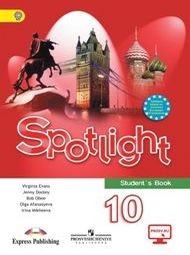
Учебник английского языка для 10 класса, автор – Ваулина, представляет собой увлекательный и структурированный подход к обучению школьников. В нем удачно сочетаются теоретический материал, упражнения для практики и интересные задания, способствующие развитию всех языковых навыков. Это пособие подходит как для самостоятельного изучения, так и для работы на уроках.
ГДЗ по Английскому Языку 10 Класс Модуль 1 Going Green Номер 5a Ваулина — Подробные Ответы
Что ты перерабатываешь дома или в школе? Составьте список и сравните его с вашим партнером.
Зеленая Мудрость
Вы должны быть тем изменением, которое хотите видеть в мире.
(Махатма Ганди, индийский политик)
A list of materials that I recycle at school:
-old car parts (for pens)
-disposable cups (for rulers)
-plastic containers (for pencils)
-paper, old notebooks (for exercise books, textbooks, napkins and so on)
-old ribbons, buttons, trimmings, magazines and comics (for craft items for projects and card making)
— Last years’ sweater or another piece of clothes ( for next year’s scarf)
-large glass bottles (for a drinks container)
-raw food waste and peelings from the school kitchen (for soil food and pet food)
Список материалов, которые я перерабатываю в школе:
— старые автозапчасти (для ручек)
— доступные чашки (для линеек)
— пластмассовые контейнеры (для карандашей)
— бумага, старые блокноты (для тетрадей, учебников, салфеток и так далее)
— старые ленты, кнопки, отделки, журналы и комиксы (для проектов поделок и создания открыток)
— свитер прошлых лет или другой предмет одежды (для шарфа следующего года)
— большие стеклянные бутылки (для контейнера для напитков)
— сырые пищевые отходы и очистки из школьной столовой (для питания грунта и кормов для животных)
Old car parts (used for making pens)
Disposable cups (repurposed into rulers)
Plastic containers (turned into pencil holders)
Paper, old notebooks (recycled into exercise books, textbooks, napkins, etc.)
Old ribbons, buttons, trimmings, magazines, and comics (used for crafting projects and card-making)
Last year’s sweater or another piece of clothing (transformed into a scarf for the next winter)
Large glass bottles (reused as drink containers)
Food scraps and peelings from the school kitchen (turned into compost for soil enrichment and pet food)
At school, I make an effort to recycle and repurpose as many materials as possible to help reduce waste and contribute to a more sustainable environment. Here’s a detailed list of the items I recycle and how they’re used:
Old car parts
Instead of throwing away unused car parts, I collect them and turn them into useful items like pens. These old materials, which might otherwise go to waste, are repurposed into something that we use daily, showing how creative recycling can be.
Disposable cups
Rather than discarding disposable cups, I clean and repurpose them into rulers. This small act of reusing items that are typically thrown out helps minimize the need for new resources and encourages others to think about how disposable materials can have a second life.
Plastic containers
Plastic containers that would usually end up in the trash are turned into pencil holders. These are perfect for organizing stationery and serve as a reminder of how even common plastic items can be reused in our daily lives.
Paper and old notebooks
Instead of tossing out old notebooks and scraps of paper, I recycle them into new materials like exercise books, textbooks, or even napkins. By doing this, I not only help save trees but also encourage others to recycle paper whenever possible.
Old ribbons, buttons, trimmings, magazines, and comics
I gather old ribbons, buttons, fabric trimmings, magazines, and comics to use in craft projects. These materials are perfect for making greeting cards, scrapbooking, or creating other fun and artistic items. It’s a great way to give things a second chance rather than throwing them away.
Last year’s sweater or another piece of clothing
If I have an old sweater or another piece of clothing that no longer fits, I repurpose it into a scarf for the following winter. Instead of buying something new, this helps me make use of items I already have, reducing waste and saving money.
Large glass bottles
Rather than discarding large glass bottles, I use them as drink containers. They’re sturdy and durable, making them ideal for holding drinks like water or juice, and they have a much longer life cycle compared to single-use plastic bottles.
Food scraps and peelings from the school kitchen
I also help recycle food waste by collecting raw food scraps and peelings from the school kitchen. These items are used to create compost, which can be used to enrich the soil, or in some cases, as pet food. This way, nothing goes to waste, and the environment benefits from healthy, fertile soil.



Оставь свой отзыв 💬
Комментариев пока нет, будьте первым!